Original URL: https://www.theregister.com/2014/06/10/citroen_c_zero_electric_car_review/
Silent, spacious and... well, insipid: Citroën's electric C-Zero car
Nice concept but still impractical - despite its Japanese heritage
Posted in Personal Tech, 10th June 2014 09:02 GMT
Review French car manufacturer Citroën's logo represents the pioneering gear system designed by André Citroën. The company has a long history of innovation from the Traction Avant to the amazing DS – so is Citroën's C-Zero electric car similarly pioneering?
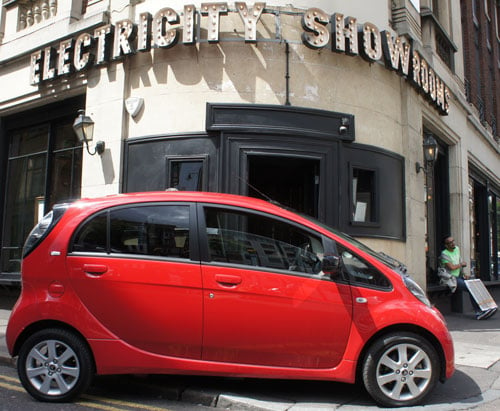
All that electricity and nowhere to charge
The love-child of a Prius and a Smart car, the C-Zero doesn’t feel like a Citroën to ride in. This is both a good and bad thing. There is nothing of the magic carpet waft of a CX or DS. But neither is there the need to give advance notice to the engine room when you want full steam ahead.
Electric motors provide all their torque from low down. While horsepower is what makes a car go fast, torque is the “oompf” that gets them rolling. The C-Zero puts out the same amount of torque as a Lotus Elise.1
It doesn’t, however, start with the instant acceleration of a Scalextric trigger. Indeed, if you repeatedly tap your foot on the accelerator it does nothing. I suspect some electronic management is at work here. Putting all that torque through the skinny tyres (which, by the way, would shame a motorcycle: 145/65 front, 175/55 rear) would no doubt have them spinning. Maximum torque is quoted as being at 2,490rpm, rather than the usual electric 0rpm.
Once the C-Zero is rolling a little it picks up fantastically. This makes it a great city car. The word “nippy” usually means “something less than fast”, but the low speed acceleration is great; it’s perfect for city traffic, particularly as you start to pick up the holier-than-thou-attitude of cyclists and dive for small gaps.
The performance feels better than you'd think from the stats. The C-Zero boasts a 49kW motor with 180Nm of torque – that translates to 65bhp and 133 lb/ft in old money. There is 1,120kg to haul around, which is par for the small car course.
These power figures translate to a top speed of 80mph and 0-62 time of 15.9 seconds.
Vroom vroo... oh
The silence is special. It is very cool driving something which is silken and quiet – albeit a bit spooky, especially in car parks where the sound bounces around. You have to resort to the horn in some areas where pedestrians don’t hear you coming, as a couple of people walking down London's Brick Lane found out. Legislation is coming in to stipulate that electric cars must make a car-like noise, which is a huge shame as a lot of the appeal is their quietness.
The excitement of electric motoring has gripped car enthusiasts. Not because of any deep love of polar bears and rainforests, but because of the torque curve’s unique blend of power with control. The LaFerrari (aka the Ferrari F150) and McLaren P1 hybrid road-legal supercars both have electric boost to make their awesome engines even more so. Ferrari calls it HY KERS and McLaren “torque fill”. As the power dips between gears, the electric enhancement fills in the gaps to provide a seamless surge of power. Andre Citroën would have approved.
Being rear-wheel drive, there are no problems in the C-Zero with torque steer, something which – combined with its unfashionably feelsome, albeit electrically assisted, steering – adds to the fun. It's not woolly like the Fiat 500 electric power steering.
Because it's so narrow you can dive for gaps, and with the motor in the back the turning circle is London black cab impressive.
Regenerative braking and turning Japanese
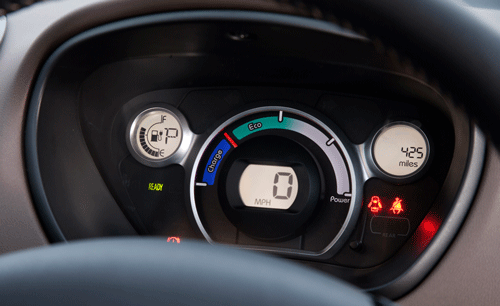
The C-Zero's dashboard. Note there's no range indication
It is tall and the upright seating means that in no way does it have any hint of sports car, but it does handle better than, frankly, how its looks suggest it will. That’s down to the batteries being right at the bottom of the C-Zero, meaning the centre of gravity is way lower than if this was an internal combustion engine car.
Braking is fine, discs at the front, drums (yes, drums) at the rear. I’ve read car reviews which says that regenerative braking, as installed on the C-Zero, spoils the pedal feel, reducing the bite, but I couldn’t detect anything of this nature. I even tried driving in my socks and couldn't feel anything untoward.
One of the reasons the C-Zero doesn’t however feel particularly Citroën is that it’s actually a Mitsubishi. Citroën might want us to think it’s a platform share with Mitsubishi but really this Citroën is as French as sushi.
The Japanese roots come from Mitsubishi's i-MiEV, a Kei-class car of the type which was the only thing you were allowed to own in Tokyo if you didn’t have a parking space. Essentially, the C-Zero is a rebadged i-MiEV.
Where's the gadgets?
This imbues the C-Zero with a number of good features. It’s very well packaged; that is to say you can get four decent-sized adults into it with a bit of shopping in the back. The seats fold flat and the first trip I took in the car was to deliver a very large, boxed printer. This being The Register I should mention the make and model – a Xerox 8570. Solid wax, an excellent device.
The Citroën team has tried to inject some Gallic tendencies. The ride is a little softer than the Mitsubishi and the interior is sparser. In fact, for such an expensive car, it’s very sparse. No sat-nav, no keyless go, the instruments don’t give an expected range, excellent air conditioning but no climate control, no parking sensors, no powered sunroof. In fact, none of the refinements you’d expect at this price point.
It has the ambience of the car you rent on holiday because you’ve overspent on the hotel. Doors clang rather than thunk. This is very much a small Japanese city car and not something which follows in the ruts of the 2CV.
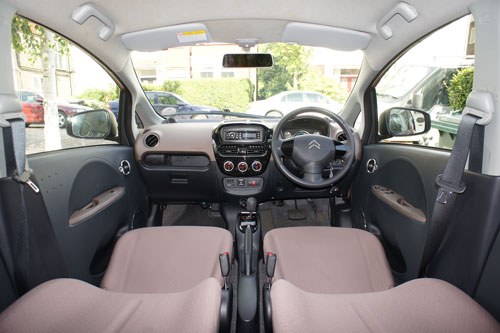
You'd expect more luxury for £25,000
There needs to be more Frenchness to it to justify the chevrons. And given that it needs to be plugged in for a charge every “100” miles, a two hour lunch break is probably a good idea.
There, I said it. The thing about electric cars is everyone always concentrates on the need to plug them in. It’s a scenario every Reg reader will be familiar with as they start to worry if their mobe has enough charge to last them to the end of the day.
It was once said that you should never turn down the opportunity for three things: sex, food or going to the toilet. Wags added “charge your iPhone” to the list and so it is for an electric car. It’s magnified by car reviews because when you get something to test you want to go somewhere in it – and that somewhere isn’t Tescos. For a daily commute, all the electric stuff aside, is the C-Zero is a good little car.
The electrical elephant in the beancounters' room
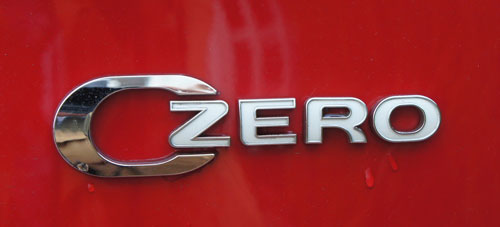
Make sure that traffic wardens know that this doesn't pay for parking
Unfortunately you can’t leave the electric bit aside. In his book Car Guy vs. Bean Counters: The Battle for the Soul of American Business, motor industry legend Bob Lutz waxes lyrical about the passion and emotion of cars. A Corvette with a Ferrari V12 installed, understanding the American love of trucks, and how the finance department doesn’t get it. Then, when he starts talking about the Vauxhall/Opel Ampera, he’s instantly the man he despises.
If a petrolhead who makes Jeremy Clarkson look like an amateur can’t escape the maths of electric cars, then neither can I.
The sums don’t add up. The cost of lithium-ion batteries is so high they can’t counter all the benefits. But there are a lot of those benefits. The government gives you a £5,000 contribution to the cost of the car to thank you for being green. You don’t pay the London congestion tax charge or road fund tax, you can get free parking, free charging, and British Gas will even fit a free charge point for you.
If it’s a company car, it’s zero rated for taxes on benefits-in-kind. But it still costs £21,000. Throw in all the benefits: assume you are someone taxed at 45 per cent, who drives into London and has free parking at work and you can (just about) make the sums add up, even allowing for depreciation. After all, who wants to buy a three-year-old electric car where replacing the batteries are likely to cost huge amounts? You don’t get any subsidies on those.
The eight-year, 80,000-mile (128,748km) warranty does, however, include the batteries. This makes a huge difference: my Caloocan Mitsubishi dealer has an I-MiEV for sale which is out of warranty and the five-year-old car has a sticker price of £8,000. The car has done just 25 miles (42km).
A new I-MiEV will set you back £28,000. Even taking the government discount into account and calling it a £23,000 car, that's a whopping £15,000 of depreciation, or £600 a mile.
Without the tax breaks you can only justify the purchase as a moral, green decision, not as an economic one. And those few, special cases where it might work, people won’t want to drive into town each day in something so bereft of luxury.
But that’s the wrong approach. You shouldn’t go for an electric city car because it makes mathematical sense, and then accommodate it in your life. You should look at how you use a car and then work out if the way you live your life fits an electric car. If you do a regular commute or lots of short journeys than never having to visit a petrol station might be a time saving rather than the chore of always having to plug it in.
Plug in, baby
There are two charging options. One of these is via a 13 amp lead which takes about seven hours to deliver a full charge. Ecotricity has 150 charging stations that will charge a Leaf in 30 minutes but they are not compatible with the Tesla and the Leaf cannot be charged at Tesla stations"
Most of the charging posts in London also use this system, which means you only get a top-up in the three hour charging limit.
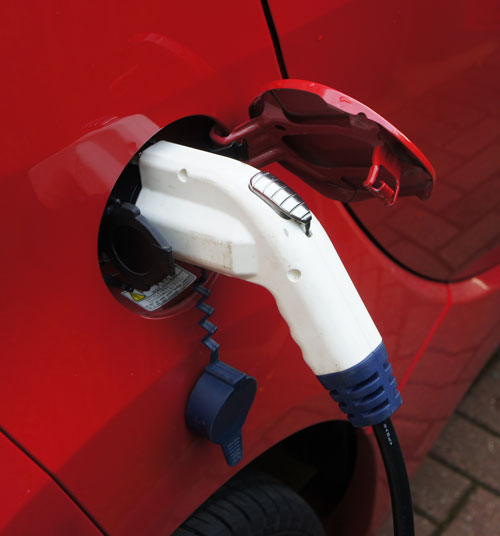
The charging is all sensibly waterproofed and there was no hint of a problem in an overnight downpour
There is a 30 amp lead option as well, which gives a full charge in three hours. It's still way longer than it takes to fill a car with petrol, but a little more practical than the regular 13 amp lead.
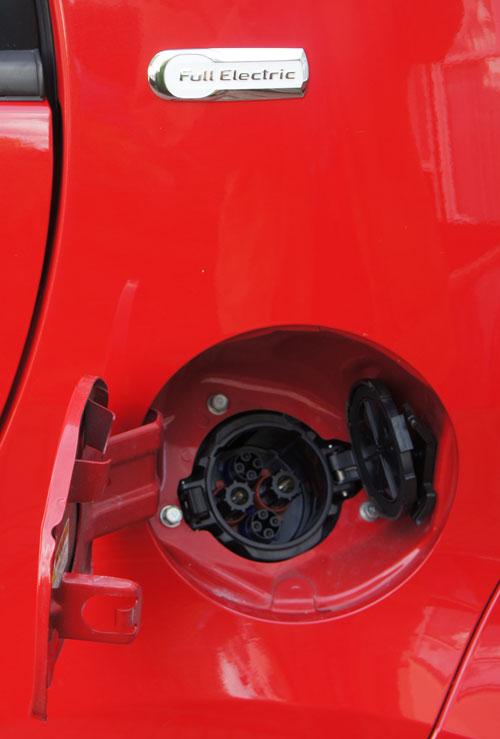
The two charging sockets are on either side of the car
The Reg Verdict
So is it worth it? Well, at one end of the scale you have the “there is no amount of money which is too much to save the planet” view, while at the other you have the “this is a £10,000 car which costs £20,000” view. Making the sums work needs a lot of what-ifs. The first thing is the saving in petrol. Since the vast majority of the cost of petrol is tax, it’s expensive stuff.
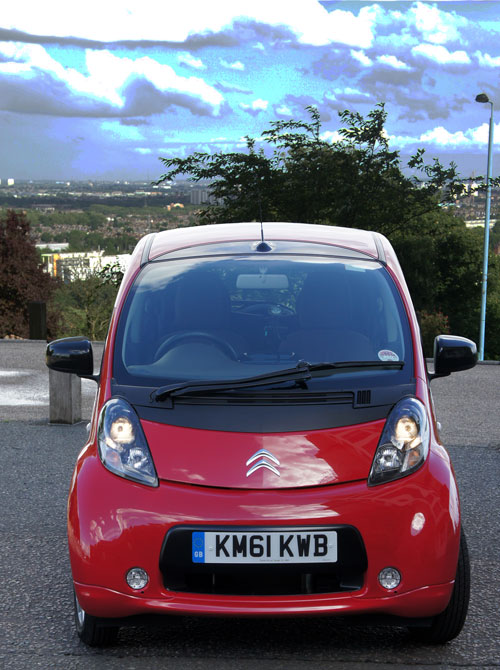
All cars are a head Vs heart decision. The C-Zero more than most
Citroën has got it right in not investing the incredible amount of money it costs to develop an electric car. While Tesla makes money on electric cars by producing something which both delivers and taps into Californian fashion, it looks very unlikely that anyone else will.
Indeed, Citroën has experimented with electric vehicles before, with a variant on the Berlingo Van. This did not produce any future electric developments.
For the vast majority of drivers, electric cars are more an interesting demonstration of technology than a practical means of transportation. Which is a shame, as I’m sure old André would have approved of electric cars. ®
1 Torquenote: Quoted specs and comparisons taken from Citroenet website's specs for the C-Zero (seemingly run by Citroën France) which states “maximum torque of 180Nm [132.76 lb/ft] … from 2,000rpm”, and the Car and Driver website review of the 2005 Lotus Elise (fitted with the 1.8 litre Toyota 2ZZ-GE engine driving a C64 six-speed box) which states 133 lb/ft at 6,800rpm.